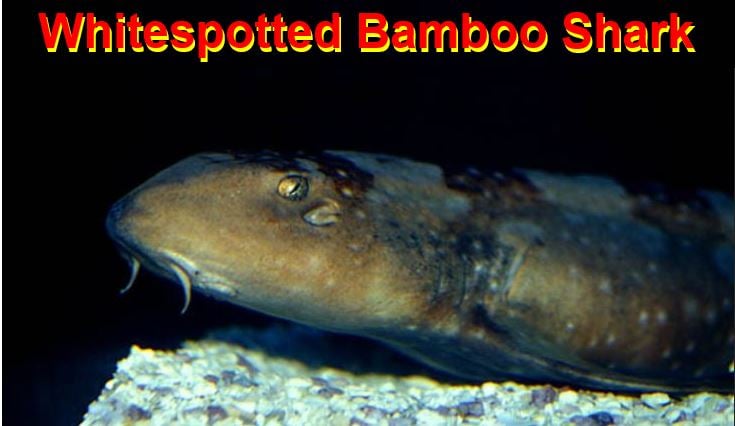A virgin female white spotted bamboo shark is about to give birth to two babies (pups) at Great Yarmouth Sea Life Centre in England. The mother-to-be shark has had absolutely no contact with males since 2013, when she arrived to the Centre after being evacuated from a sister centre in Hunstanton following a flood.
She is the only member of her species at Great Yarmouth Sea Life Centre, but has, according to experts, produced two fertile eggs which they say will hatch in about nine months.
Marine biologist Darren Gook, from the Centre, said:
“They will be the first such births in the Sea Life network and we’re excited and privileged to be expecting such a miraculous event.”
 Several animals can reproduce with no male present. It is only recently that we have known sharks can do this too. (Image: aasharks.com)
Several animals can reproduce with no male present. It is only recently that we have known sharks can do this too. (Image: aasharks.com)
Female sharks’ ability to reproduce when no males are present is a remarkable phenomenon we have only recently known they are capable of.
The Great Yarmouth team’s discovery of the two eggs containing valid embryos follows an announcement in Germany of a virgin birth involving the same species. In the German case, the mother is also the result of a virgin birth.
Not the Immaculate Conception
This is not the Immaculate Conception in the world of sharks, biologists insist.
Regarding virgin births, Mr. Gook said:
“The process is called ‘parthenogenesis’ and has long been known to occur in domestic chickens and some reptiles, but was not recorded in sharks until 2008.”
“Females somehow manage to add an extra set of chromosomes to their eggs to produce offspring which are either clones or half-clones of themselves. It’s been recorded in bonnethead, blacktip and zebra sharks as well as white spotted bamboos.”
 Shark embryos visible in the eggs laid by the virgin shark in Germany. (Image: Bavarian State Collection for Zoology)
Shark embryos visible in the eggs laid by the virgin shark in Germany. (Image: Bavarian State Collection for Zoology)
Biologists had assumed that any offspring from a virgin mother would not be able to reproduce – they thought they would be infertile. However, what has happened in Germany put an end to that theory.
Parthenogenesis exists in several species
Parthenogenesis does not include reproduction modes in hermaphroditic species which have the reproductive organs of both sexes in a single body. It just refers to females reproducing with no males present.
Parthenogenesis is known to occur in some invertebrate animal species, including, water fleas, nematodes, some bees, aphids, some scorpions, and parasitic wasps. The phenomenon has also been observed in some vertebrates, such as some species of reptiles, amphibians, fish, and very rarely birds.
In 2001, a bonnethead – a type of small hammerhead shark – gave birth to a live pup at Henry Doorly Zoo in Nebraska USA. The tank contained three females of the species, but no males. Biologists concluded the pup was conceived through parthenogenic means.
Within days of being born, the shark pup was killed by a stingray. An international team of scientists carried out an investigation, which included DNA testing, and concluded the reproduction was parthenogenic.
Pups have no male genes
The tests showed that the pup, a female, had DNA that matched just one female that lived in the tank. The pup had no male DNA, and it was not a twin or clone of the mother. In fact, it contained only half of its mother’s DNA.
This type of reproduction had never been seen before in cartilaginous fish such as sharks.
Mr. Gook believes that this type of asexual reproduction is nature’s way of making sure a species survives after a dramatic decline in population.
The two fertilized eggs have been moved to a nursery tank where they will be closely monitored. Visitors will be able to see the eggs.
